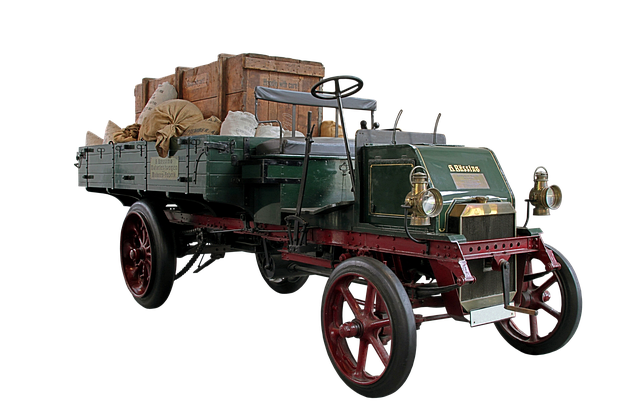“Learn how to navigate the process of registering your car in California with ease. This comprehensive guide breaks down the steps, from understanding the crucial VIN verification process to gathering all required documents. We’ll walk you through each stage, ensuring a smooth experience at the DMV.
Discover the common pitfalls and effective solutions during registration, and don’t miss post-registration tasks vital for legal ownership. Equip yourself with the knowledge needed to successfully register your vehicle using our expert tips, including optimal VIN verifier practices.”
- Understanding the Vehicle Identification Number (VIN) Verification Process
- Gathering Necessary Documents for Car Registration in California
- Step-by-Step Guide to Registering Your Vehicle with the DMV
- Common Challenges and How to Overcome Them During Registration
- Post-Registration Tasks: Important Steps to Ensure Legal Ownership
Understanding the Vehicle Identification Number (VIN) Verification Process

When registering your car in California, understanding the Vehicle Identification Number (VIN) verification process is crucial. The VIN is a unique 17-character identifier that serves as a digital fingerprint for your vehicle. It contains vital information about the make, model, year, and manufacturing location of the car. To ensure the accuracy of your registration, California requires a thorough VIN inspection. This typically involves verifying the VIN with the manufacturer’s records to confirm its authenticity and history.
One convenient method for this verification process is through mobile vin verification services. These services allow you to capture and transmit your vehicle’s VIN digitally, often through an app or online platform. A mobile vin verifier can cross-reference the provided VIN against extensive databases, offering instant validation. This not only streamlines the registration process but also helps in identifying any potential issues related to the car’s history, such as flood damage or odometer rollback, ensuring a safer and more reliable registration experience.
Gathering Necessary Documents for Car Registration in California

Before you start the registration process for your car in California, it’s crucial to gather all the necessary documents. One critical component is the Vehicle Identification Number (VIN) verifier, which can be obtained through a mobile VIN inspection service. These services allow you to verify the vehicle’s history digitally from the comfort of your home or even while you’re at a local car dealership. This step is essential for ensuring that the car isn’t stolen, has no outstanding liens, and meets all safety standards.
Along with the VIN verification report, you’ll need other key documents like your driver’s license, proof of insurance, and the title (or proof of ownership). It’s also beneficial to have registration fees readily available. Remember that specific requirements may vary slightly depending on whether you’re registering a new or used vehicle, so it’s always a good idea to double-check with the California Department of Motor Vehicles (DMV) for the most up-to-date information and consider availing of services like mobile VIN inspection for added convenience.
Step-by-Step Guide to Registering Your Vehicle with the DMV

Registering a car in California involves several steps to ensure your vehicle is legally compliant. Here’s a step-by-step guide to help you navigate the process with ease. First, gather all necessary documents, including your driver’s license, proof of insurance, and the vehicle’s title. You’ll also need to perform a mobile vin verification by using the Vehicle Identification Number (VIN) to check for any discrepancies or outstanding issues.
Next, visit a California Department of Motor Vehicles (DMV) office or use their online services to apply for registration. Input your VIN during the application process to ensure accuracy. After submitting all required documentation and fees, the DMV will process your request. Once approved, you’ll receive your vehicle registration and license plate, completing the mobile vin inspection and registration process successfully.
Common Challenges and How to Overcome Them During Registration

Registering a car in California can be a straightforward process, but it’s not without challenges. One common hurdle many drivers face is ensuring their Vehicle Identification Number (VIN) is accurate and readily available. This information is crucial for verifying ownership and completing the registration. If you’re encountering issues with your VIN, consider utilizing a mobile vin inspection or vin verification service to streamline the process. These services can provide immediate validation, making it easier to overcome this potential roadblock.
Another challenge could be gathering all the necessary documents, especially if you’re importing a vehicle or transferring ownership. Make sure you have accurate and up-to-date documentation, including proof of insurance, a valid driver’s license, and any title or registration records from previous owners. A mobile vin inspection can also assist in verifying these details, ensuring that your registration goes smoothly without delays caused by missing paperwork.
Post-Registration Tasks: Important Steps to Ensure Legal Ownership

After successfully registering your vehicle in California, there are several crucial steps to ensure legal ownership and compliance with state regulations. One essential task is updating your vehicle’s registration with the Department of Motor Vehicles (DMV) if any changes occur. This includes modifying the address or transferring ownership to a new owner. Failing to do so within the specified timeframe may result in penalties.
Additionally, utilizing a mobile vin verification service can greatly simplify the process for both owners and potential buyers. A mobile vin verifier enables you to quickly and securely check your vehicle’s history, including its previous owners, maintenance records, and any reported accidents, all from the convenience of your smartphone. This is especially beneficial when selling or purchasing a used car, as it ensures transparency and helps prevent fraud, making the entire transaction smoother and safer.
Registering a car in California involves a straightforward process, but understanding the requirements is key. By following the steps outlined in this article, from VIN verification using a reliable vin verifier to gathering all necessary documents, you can ensure a smooth registration experience. Be prepared to encounter common challenges, and with the right knowledge, they can be easily overcome. Once registered, don’t forget the post-registration tasks to maintain legal ownership and avoid future issues.
